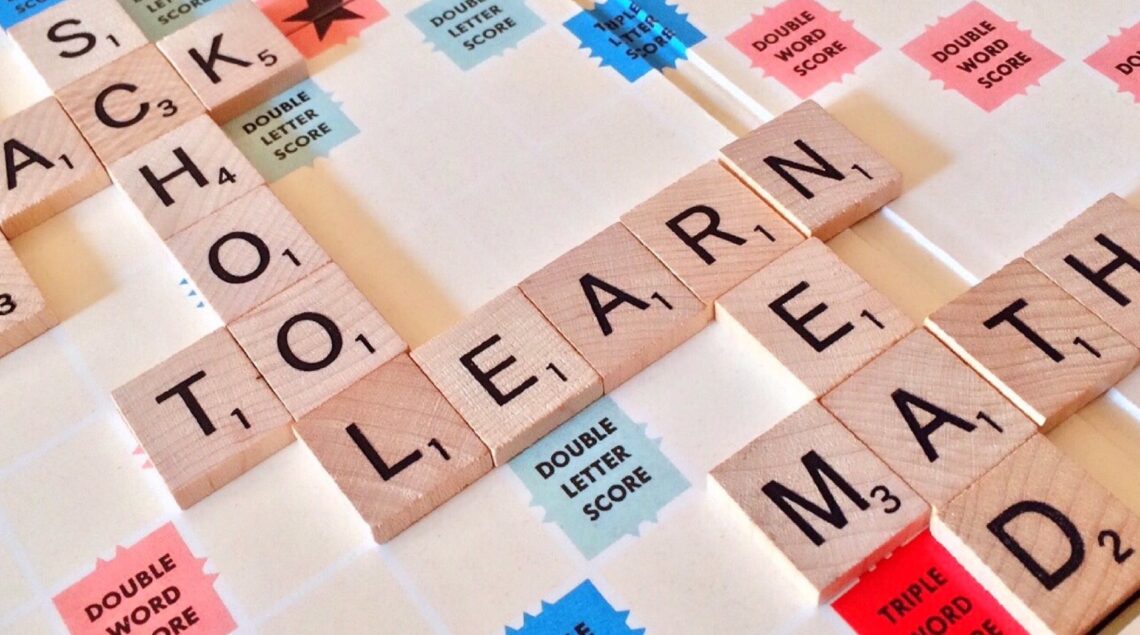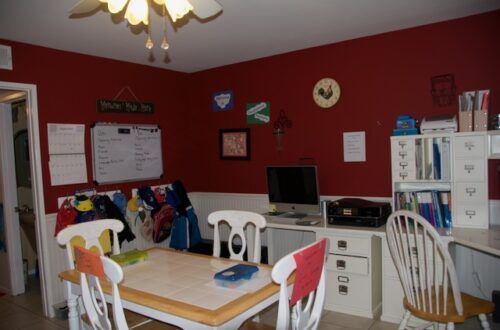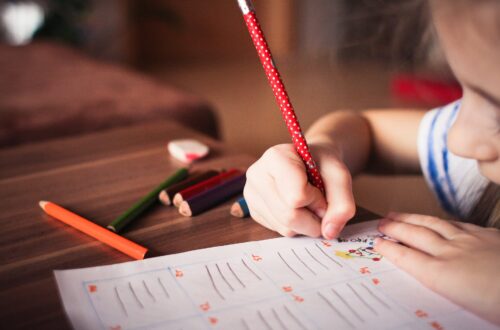
Bare Minimum Homeschool Day
If I were to ask you what a bare minimum day in your homeschool would look like, would you be able to give me an answer? What would absolutely need to be done for your children to have learned a little today? What subjects are absolutely critical, and which ones could be left for another day?
It is essential that you define what the minimums are so that when things get difficult, you can know that there was some learning that got done that day. People get sick, babies keep you up all night, and things break in the home. These challenges can arise out of nowhere, and if you are not prepared with a plan B, you can easily get frustrated and angry. When that happens, you can guarantee that there won’t be effective learning happening.
What if your child is feeling sick? If they aren’t too ill, I recommend you do just a little bit of school, even on a sick day. This doesn’t need to be a lot, but even just a little bit will make a difference.
So, what does a bare minimum homeschool day look like? This is going to widely vary based on the age of your children. Let’s start with your early elementary students, from grades K-2. This is where you are more in demand as a teacher, and so your bare minimum school day will likely be very short.
Important Note: If you are virtual schooling, you may have special school guidelines that you need to follow with regards to attendance. You may need to fill out an offline work log, or discuss things with your teacher. Please make sure you are following the guidelines for your particular school!
Bare Minimum Homeschool K-2nd
Reading Aloud- 20 Minutes:
Have your child pick one or two books that they would like you to read out loud to them. If you have an older child in the house, then have them read those books to the younger siblings. This will get the older student engaged as well. Aim for about 20 minutes of reading out loud.
Reading/ Phonics Practice- 15-20 minutes
The next thing to do is to have your student practice the skill of reading. This can be done by going through the sight words, working on a new phonics concept, having them read a book out loud. The goal here is to have your child practice the skill of reading and word deciphering every day, even if it is only for a little while. If you have an older child, you can also involve him in this as well. Many times elementary age students love helping the younger ones out, and it takes a burden off of you.
Math- 20 minutes
Math is a cumulative skill, so it is really important that it gets practiced on a daily basis. You may be doing place value with your first grader, or counting with your kindergarten student. There are a number of excellent math apps available for iPad that can be great fun for your student to work on. You can also do lessons using money, or flashcards to memorize math facts. Take a look at what the curriculum is focusing on, and then pick one thing to teach for this day. Remember, it is not about getting all the knowledge into your student today. We are just trying to continue the learning.
Handwriting/ Coloring: 5-10 minutes
Have your child do a handwriting page, or a coloring page. It is important that they have the practice of holding a pencil or a crayon correctly, and that skill is one of the fine motor skills which gets better with practice.
So, that is it for a bare minimum homeschool day for a young elementary student. I know, it is less than two hours of instruction. But, because you are teaching her one on one, the learning is concentrated. You are able to assess comprehension immediately and adjust your teaching appropriately. You do not need 6 hours to get through everything! In fact, you will find that in many ways, homeschooling is much more efficient than classroom learning.
The goal for a bare minimum homeschool day is to hit the important topics, even just for a small amount of time. Then, you can crawl back into bed, or tackle that really critical project that came up at the last minute. There are times when you just don’t have the energy to teach, and whereas a public school teacher can call in a substitute, you don’t have that flexibility. So, you need to have a way to get just a little school done before you collapse in exhaustion.
Bare Minimum Homeschool 3rd-5th
As your students get older, they can be expected to be able to handle a little more independent work. This means that for a bare minimum homeschool day, more can be expected at this age. Here is a suggested framework that you can use to guide your children through a shortened day.
Independent Reading-30 minutes:
Have your child pick some books to read for about a half an hour. Depending on your child, this may be a chapter book or some picture books. Some children may prefer to read graphic novels. The key here is to allow your child to pick something that is of high interest to them. You can sit on the couch next to them and read something of your own, or you could work with a younger child during this time. If you have a particularly energetic child, then break this time up into 2 fifteen minute blocks of time.
Guided Language Arts and/or Read Aloud- 30 minutes:
During this time, you will be working with your child on some teacher directed language arts work. This could be spelling word practice, reading aloud out of a more advanced literature book, working through a language arts worksheet, or going through a piece of the language arts curriculum on the computer or in a work book. Additionally, you could have your child work on cursive or printing during this time. Another activity could be a journal or create writing exercise where you work together to create a story or respond to a question.
Independent Math Work- 20-30 minutes:
This will be work on math facts or on math worksheets that your student can do without your help. Another way you could handle this would be to have your student do math learning applications on the iPad or computer.
Guided Math- 20-30 minutes:
Look through your student’s math curriculum and pick one small topic to teach today. Spend some time with your child and help them to learn just a little bit more in math today. You could also take this time to review a concept that you know your child is struggling with. Maybe fractions are a challenge for your student. You could spend today just doing a light review of fractions and see if your child makes any progress along the way.
Other Learning- 45 minutes:
This is the time to put on the educational videos for your student. If you have Planet Earth, or another learning or educational documentary, then put it on and bring out the popcorn. You child will love the change of pace, and you will be able to relax with him and know that more learning is taking place.
Your older elementary student is capable of doing more independent work than your younger student, so you can see that this suggested bare minimum day is just a little longer than the one I recommended for a young elementary student. This is still just a half day of school, but one that balances independent and guided learning for those days when you need less on your plate.
Middle School:
Ah, the wonderful middle school years, when the student is capable of learning on their own but finds that school is no longer easy or fun. How do we define a bare minimum homeschool day in the middle school era?
Focus on Critical Subjects- Math and Language Arts
We want to spend our time focusing on the really critical academic areas. Math and Language Arts should be done every day. If possible, make sure your student completes a Math and an English lesson every day. The key here for success is to allow your student to move a lesson to a different day to make things a little easier. For example, imagine that your student has a Math and an English test on the same day, and that you are trying to create a minimum day for yourself. Give your student permission to move one or both of those tests to another day, and then – this is important- have them do a different lesson. They must do an English lesson, but maybe they do a first lesson in the next unit. Don’t let them skip a day of English, because that content will back up and cause problems for them in the future.
Make sure that you establish a deadline for your student as to when the weekly work, even the hard things, will get done. And, with your middle school students, it is critical that you go in and make sure the work is done. They may “forget” about that paper they put off and then the end of the semester deadline comes and they are so behind it is impossible to catch up.
Encourage Independence
If your middle school student can do the other subjects on their schedule without your help, then encourage them to do so. If they need your help, and you happen to be sick, then have them either skip that subject for the day, or do a different lesson. Your middle school student is capable of doing independent work, they just need that extra bit of supervision to overcome the inevitable distraction that happens at this age.
High School:
With your high school student, I believe that the best way to handle this schedule is to let your child be in charge. Allow them the freedom to move assignments around if the school calendar permits, but I would make sure to establish a Friday deadline for all work due that week. Their weekend can start when their weekly work is completed.
Flexibility with Deadlines
My eldest son, who is a senior this year, is managing a full academic load and a job. Depending on his schedule during the week, he may have a day where he is scheduled to work a four hour shift, has 3 unit tests, and a science lab, all on the same day. That is a really overwhelming schedule! What we have done is to allow him to have some flexibility during the week to move things around and have the schedule be balanced. On a day he has a full work shift, he might need to do the bare minimum in his school just so that he can have enough hours to get it all done. We keep the Friday deadline in place so that he doesn’t get behind.
Bare minimum in High School means that your student makes progress in each of his classes each day, because there just isn’t the flexibility to eliminate a lesson like there is in elementary school.
I hope that this helps you create a framework for your Bare Minimum Homeschool Day. We all have days where a full day of school is just not possible. By having this Bare Minimum Homeschool Day framework in place, learning still happens each and every school day, even when you are under the weather.
I have created some homeschool printables for my subscribers that I would love to share with you! You can create 2 sets of these, one for that bare minimum homeschool day, and one for regular days!
[mailpoet_form id=”3″]
Jennifer Douglas
Jennifer Douglas is an author, patient advocate, and DCIS breast cancer survivor. After navigating her own breast cancer journey in 2019, she began writing and encouraging others who were newly diagnosed. Her resources include her book, "A Breast Cancer Journey: Living It One Step at a Time," and her online support course, "Encourage: Breast Cancer and Beyond." Jennifer also actively supports patients through her online presence and direct involvement in communities and support groups, offering guidance and encouragement every step of the way.


You May Also Like

One-Room Schoolhouse Homeschool
November 13, 2020
Back to School at Home
August 14, 2020
